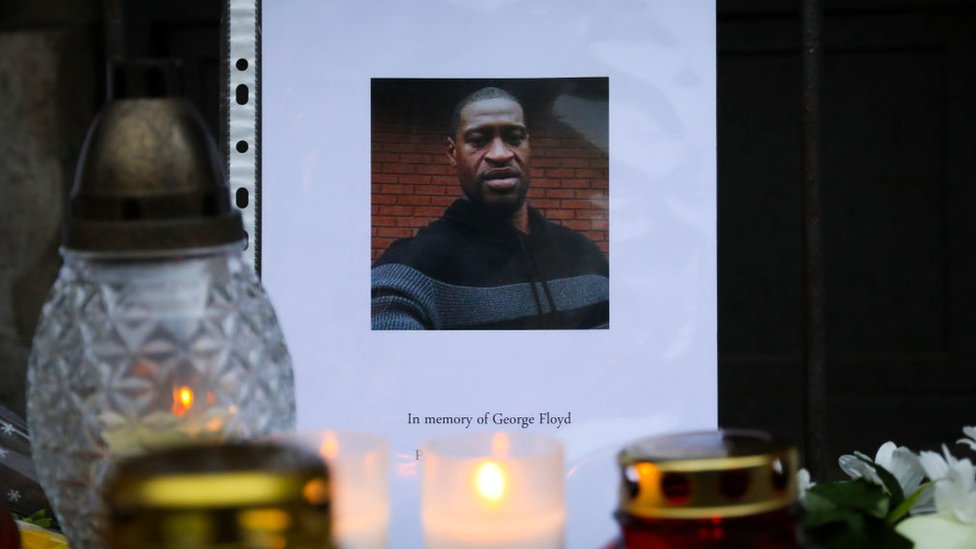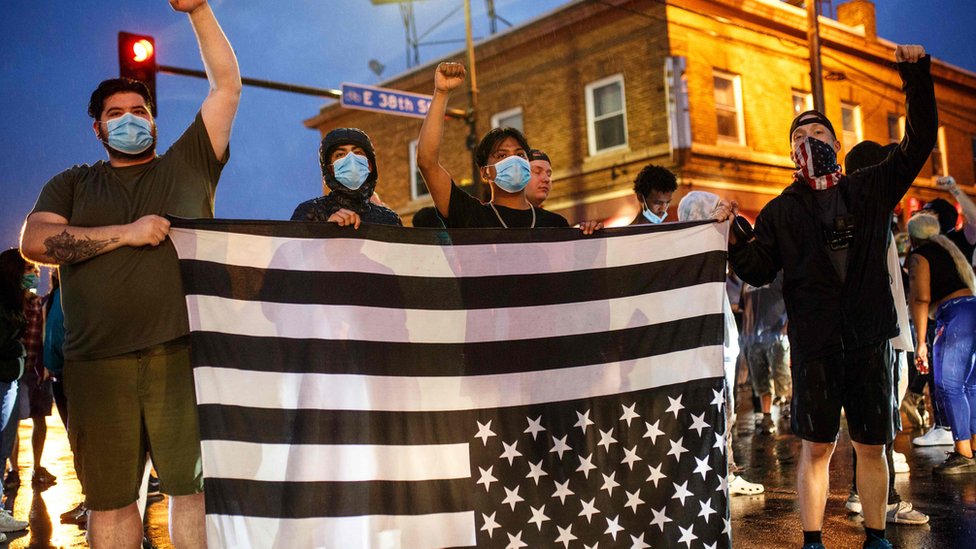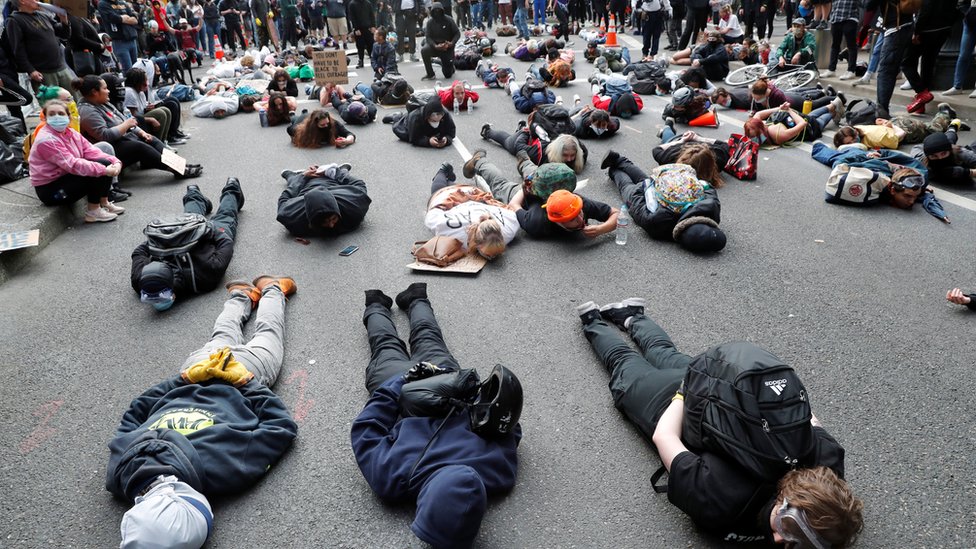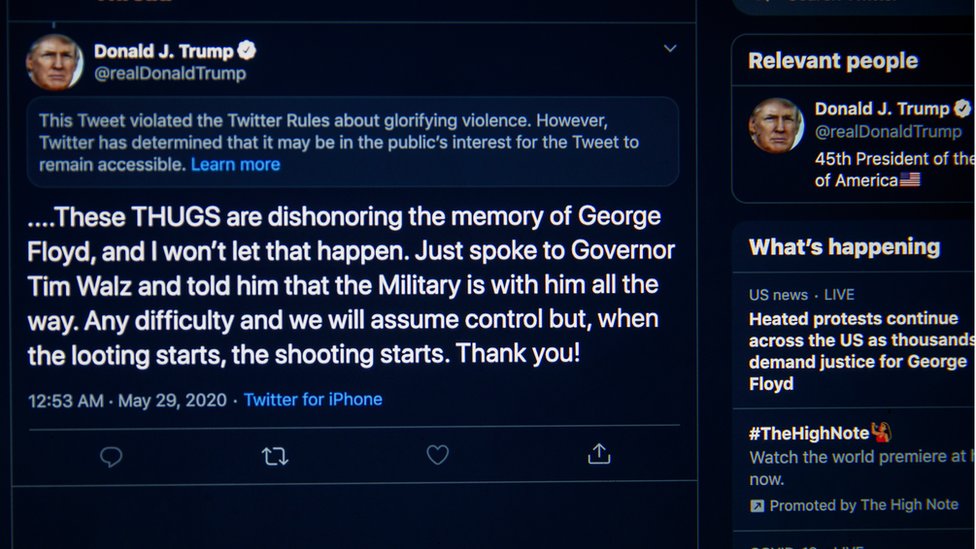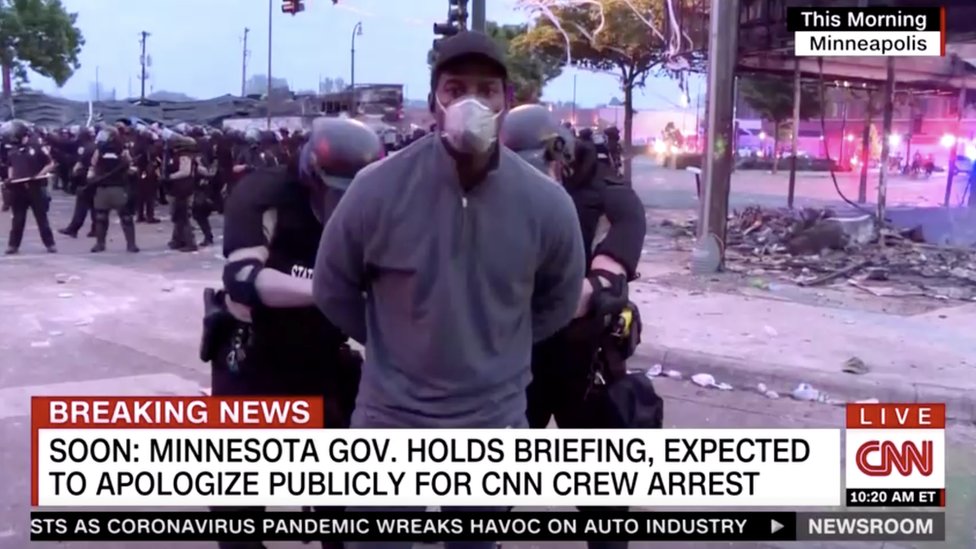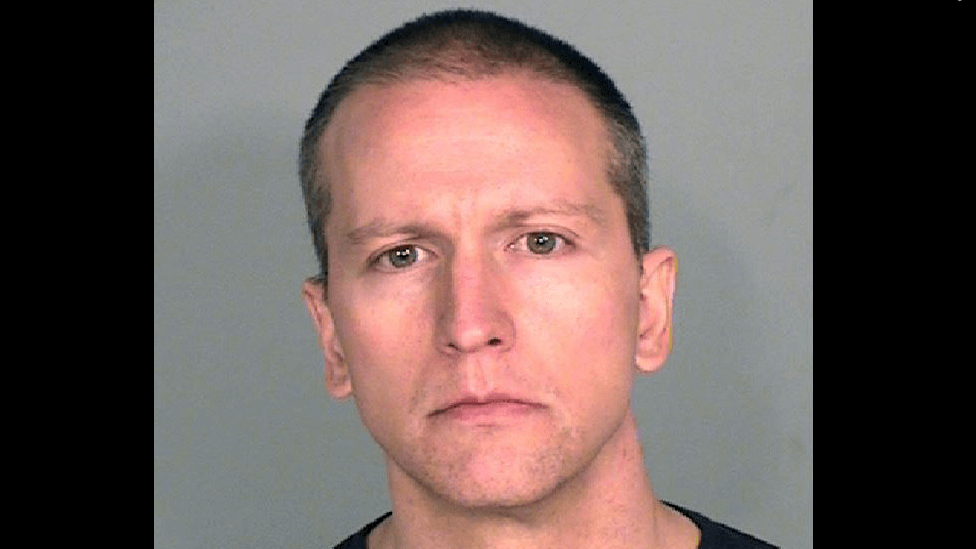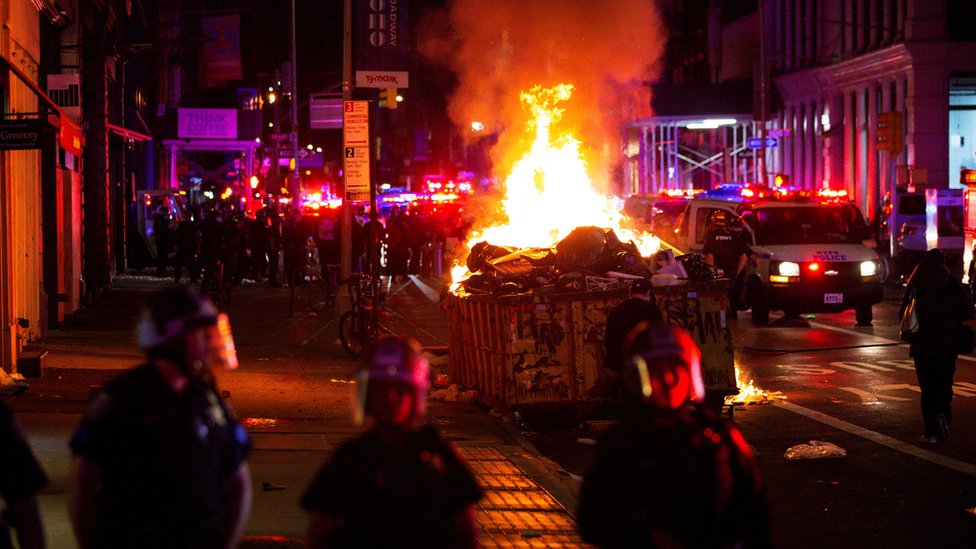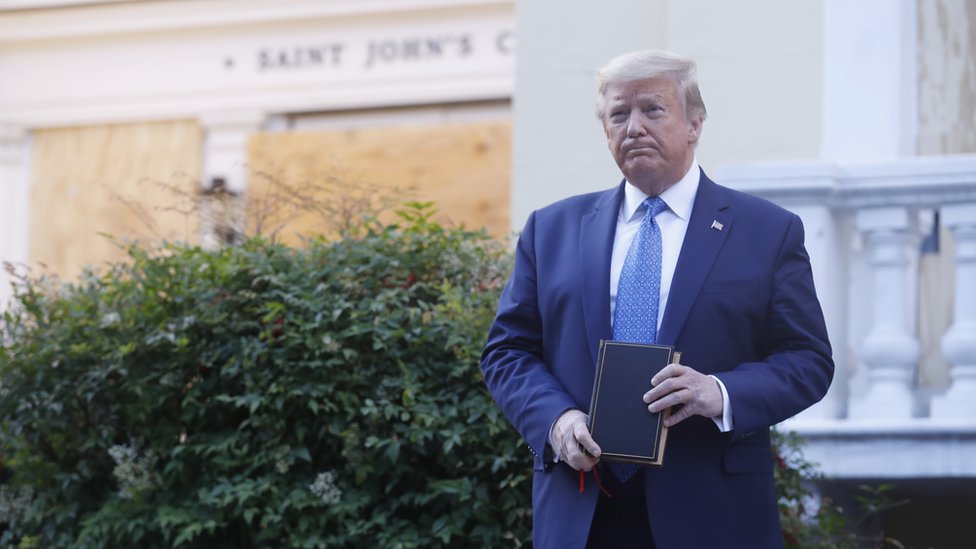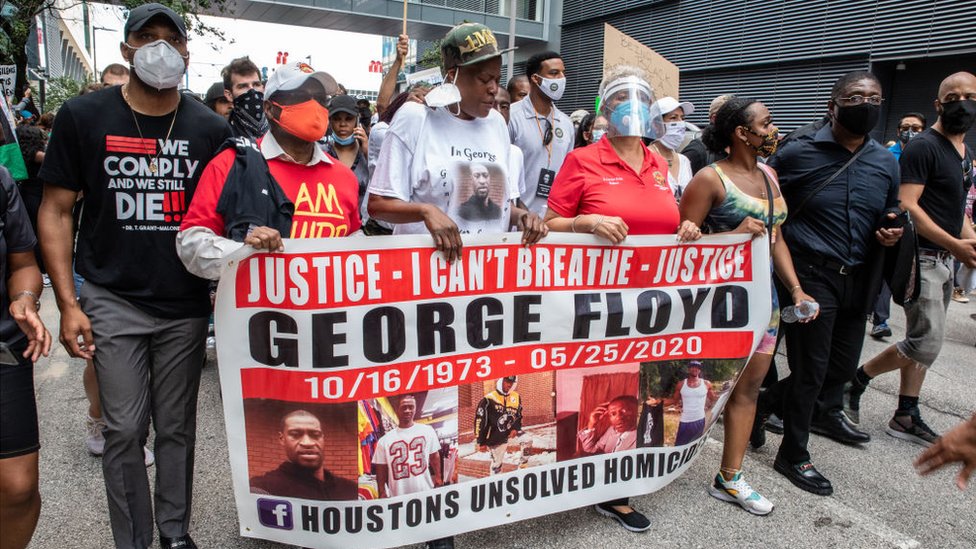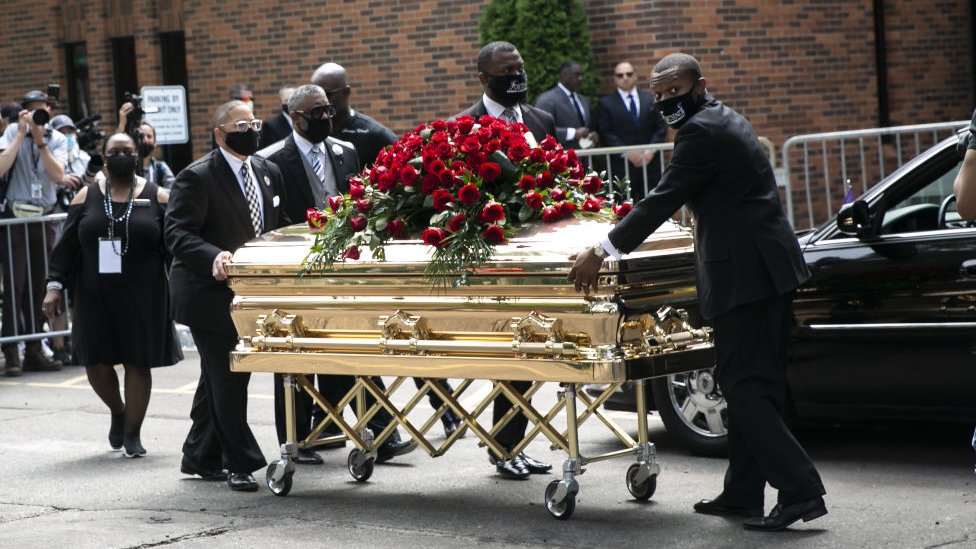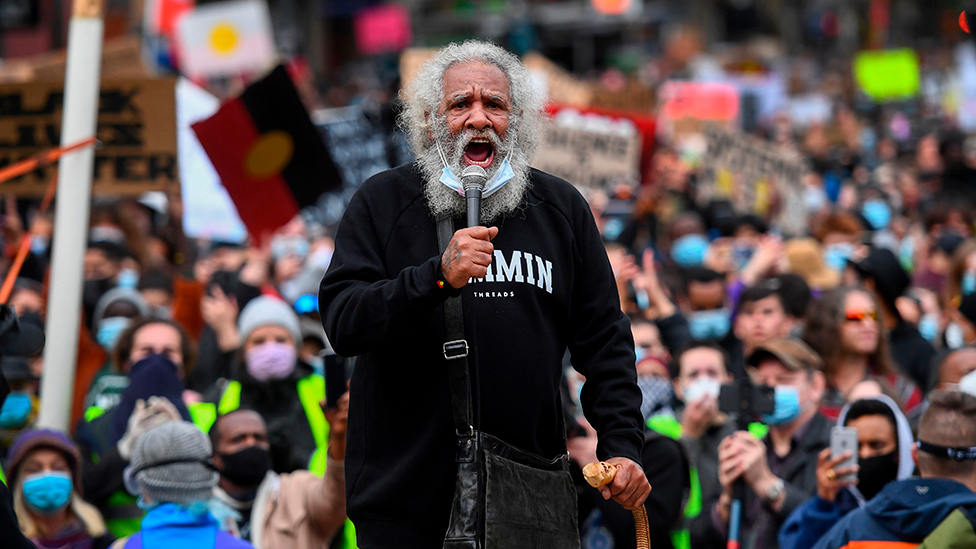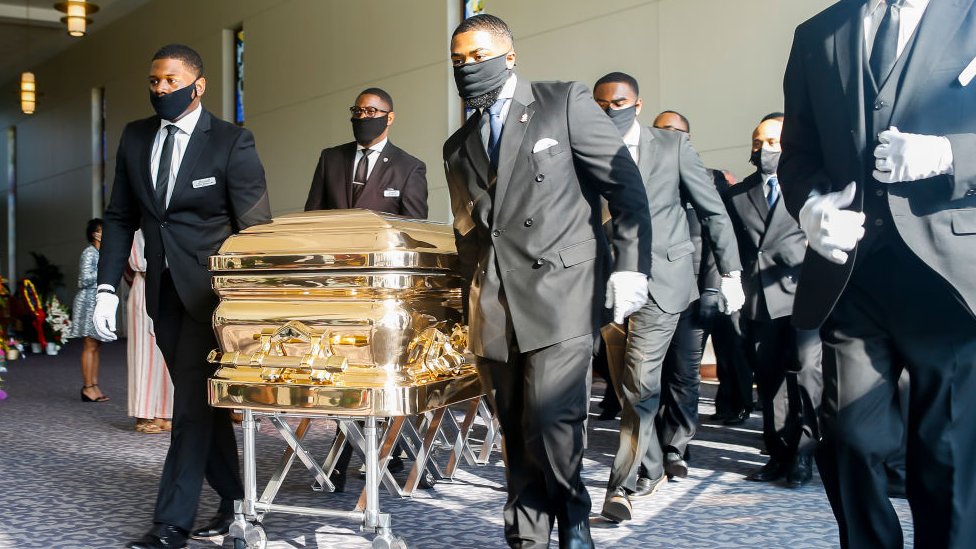George Floyd: Officer told dying man to 'stop yelling'
- Published

George Floyd repeatedly told the police officers who detained him that he could not breathe
The US police officer accused of George Floyd's murder told him to stop talking as he repeatedly gasped under the man's knee, according to court documents.
The unarmed black man cried out for his late mother and children as he said the Minneapolis policeman would kill him, transcripts from body-cam footage show.
They were disclosed in court by lawyers for one of the four officers involved.
The documents offer the clearest picture yet of Mr Floyd's last moments. His death in May sparked global uproar.
It led to a wave of anti-racism protests led by the Black Lives Matter movement, and stirred debate and reflection in the US over the country's history of slavery and segregation.
All four officers involved in taking Mr Floyd into custody were fired and arrested. Derek Chauvin, who knelt on his neck, faces several charges including second-degree murder, while the other three - Thomas Lane, J Alexander Kueng and Tou Thao - are charged with aiding and abetting murder.
The transcripts were made public on Thursday as Mr Lane's lawyers asked for the case against him to be dismissed.
Warning: Some readers may find the content below distressing.
What do the transcripts show?
Until now, eyewitness footage shared on social media revealed most of what was known about Mr Floyd's arrest and his final moments.
The new transcripts give a more detailed account, external, shedding light on significant parts of the encounter, from the time Mr Lane and Mr Kueng arrived at the scene, to the point where Mr Floyd was given CPR in an ambulance.
Transcripts of footage recorded by body cameras fitted to Mr Lane and Mr Kueng show Mr Floyd said more than 20 times he could not breathe as he was restrained by the officers in a Minneapolis street.
They confronted him outside a convenience store where he was suspected of having used a forged $20 note to buy cigarettes.
At one point, a handcuffed Mr Floyd, while pinned down on the road next to the police car, gasps that he cannot breathe, adding: "You're going to kill me, man."
'I'm tired of being afraid': Why Americans are protesting
Mr Chauvin, who is shown in bystander footage appearing to kneel on Mr Floyd's neck for nearly eight minutes, replies: "Then stop talking, stop yelling.
"It takes heck of a lot of oxygen to talk."
The transcripts show Mr Floyd appears co-operative at the beginning of the arrest, repeatedly apologising to the officers after they approach his parked car.
Mr Lane asks Mr Floyd to show his hands at least 10 times before ordering him to get out of the vehicle.
In response to one of the demands to see his hands, Mr Floyd says: "Man, I got, I got shot the same way, Mr Officer, before." It is not clear what he is referring to.
Why monuments in the US are being taken down
At one point Mr Lane says: "Why's he getting all squirrelly and not showing us his hands and just being all weird like that?"
The officers then handcuff Mr Floyd and try to put him into the back of their police car. As they do, Mr Floyd becomes agitated, repeatedly pleading that he is claustrophobic.
Mr Lane asks if he is "on something". Mr Floyd replies: "I'm scared, man."
According to another document, Mr Lane told investigators that once in the car, Mr Floyd began "thrashing back and forth".
When asked "So he pushed himself out of the car?" Mr Lane replied: "Yeah".
The investigator then asks: "Versus you guys pulling him out of the car?" and Mr Lane says: "Yeah, because the goal is to keep him in the car, we didn't want him coming out again."
Pinned on the ground, according to the transcript, Mr Floyd cries out a dozen times: "Mama."
He says: "Can't believe this, man. Mom, love you. Love you.
"Tell my kids I love them. I'm dead."
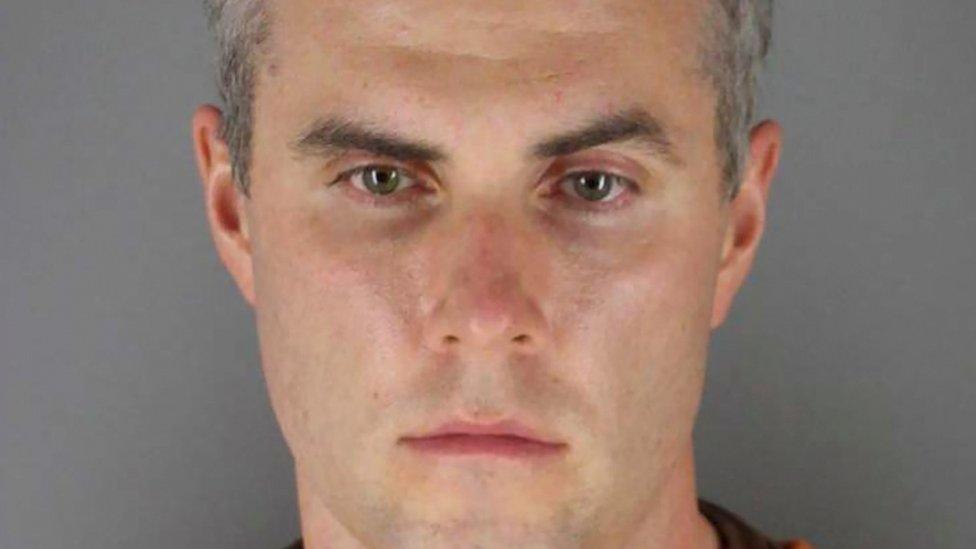
Thomas Lane was just days into the job when the incident happened
At one point, when Mr Floyd continues to plead he can't breathe, Mr Lane asks Mr Chauvin: "Should we roll him on his side?"
Mr Chauvin responds: "No, he's staying put where we got him."
Mr Lane then says: "Okay. Just worry about the excited delirium or whatever."
Mr Chauvin replies: "Well that's why we got the ambulance coming," and Mr Lane says "Okay, I suppose".
Mr Chauvin's lawyers have not commented on the documents since they were made public.
In June Panorama spoke to local people to piece together the moments leading up to George Floyd's death
Why are the transcripts coming out now?
The transcripts were released in support of a legal bid to dismiss the criminal charges against Mr Lane, a new recruit only days into the job when Mr Floyd's death happened.
Mr Lane's lawyer Earl Gray, who filed the documents, argued that it was "not fair or reasonable" for his client to stand trial on the charges.
The new court documents include a transcript of Mr Lane's interview with investigators, external from Minnesota's Bureau of Criminal Apprehension.
In the interview, Mr Lane talked through the first crucial moments of his encounter with Mr Floyd.
Mr Lane said he had pulled his gun out and ordered Mr Floyd to show his hands after approaching his car and seeing him "sitting with his hands down below the seat".
Pictures from inside the car Mr Floyd was sitting in before his arrest show two crumpled $20 bills that, according to Mr Gray, were counterfeit.
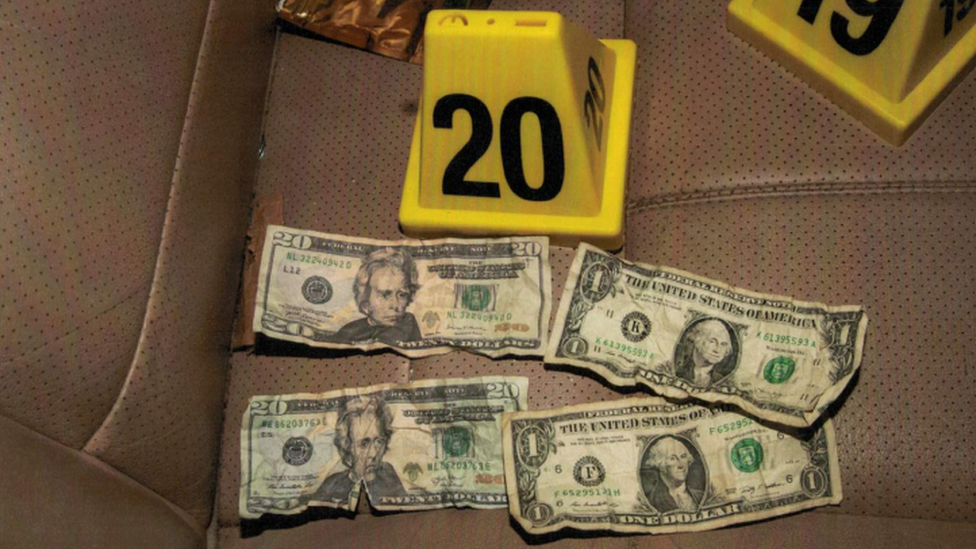
Mr Lane's lawyer said two fake $20 bills were found in the car Mr Floyd was sitting in
At the end of the interview, one of the investigators asked Mr Lane if he felt either he or Mr Chauvin had contributed to Mr Floyd's death.
"I object to that. You're not going to answer that," Mr Gray said.
What has happened since Mr Floyd's death?
The incident and the bystander videos that exposed it highlighted deep wounds over racial inequality in the US. For many, the outrage over Mr Floyd's death also reflected years of frustration over socio-economic inequality and discrimination.
Protests erupted and have continued since, across many US cities and also internationally.
President Trump posed for a photo op outside a church, moments after protesters were cleared by police
Police forces, governments and businesses pledged reforms in recognition of the racial inequality that fuelled the protests.
Monuments to historical figures with links to slavery in the US and other countries were re-assessed. Some were toppled or vandalised, others were taken down by authorities and institutions.
Mr Floyd's death followed the high-profile cases of Michael Brown in Ferguson, Missouri; Eric Garner in New York; and others that have driven the Black Lives Matter movement in recent years.

More on the US protests

- Published26 June 2020
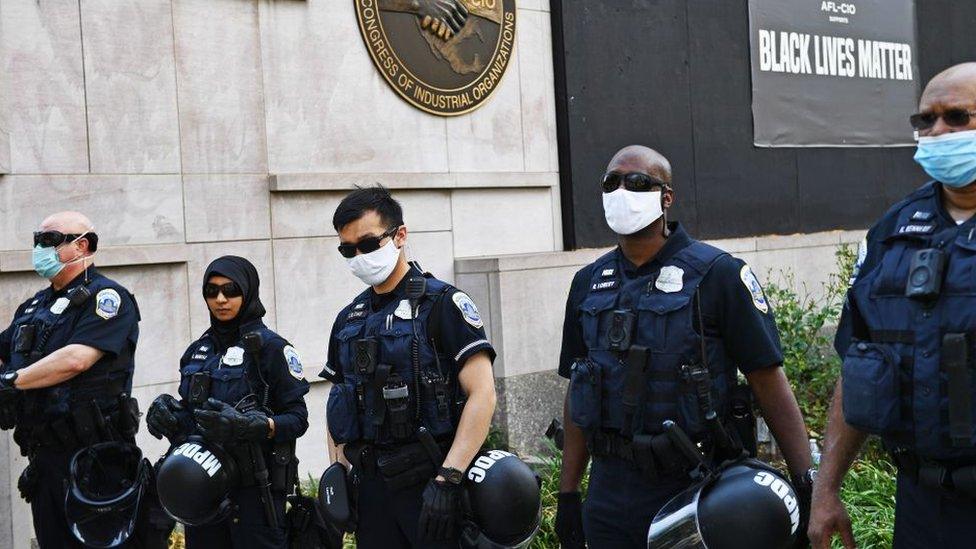
- Published21 January 2022

- Published16 July 2020

